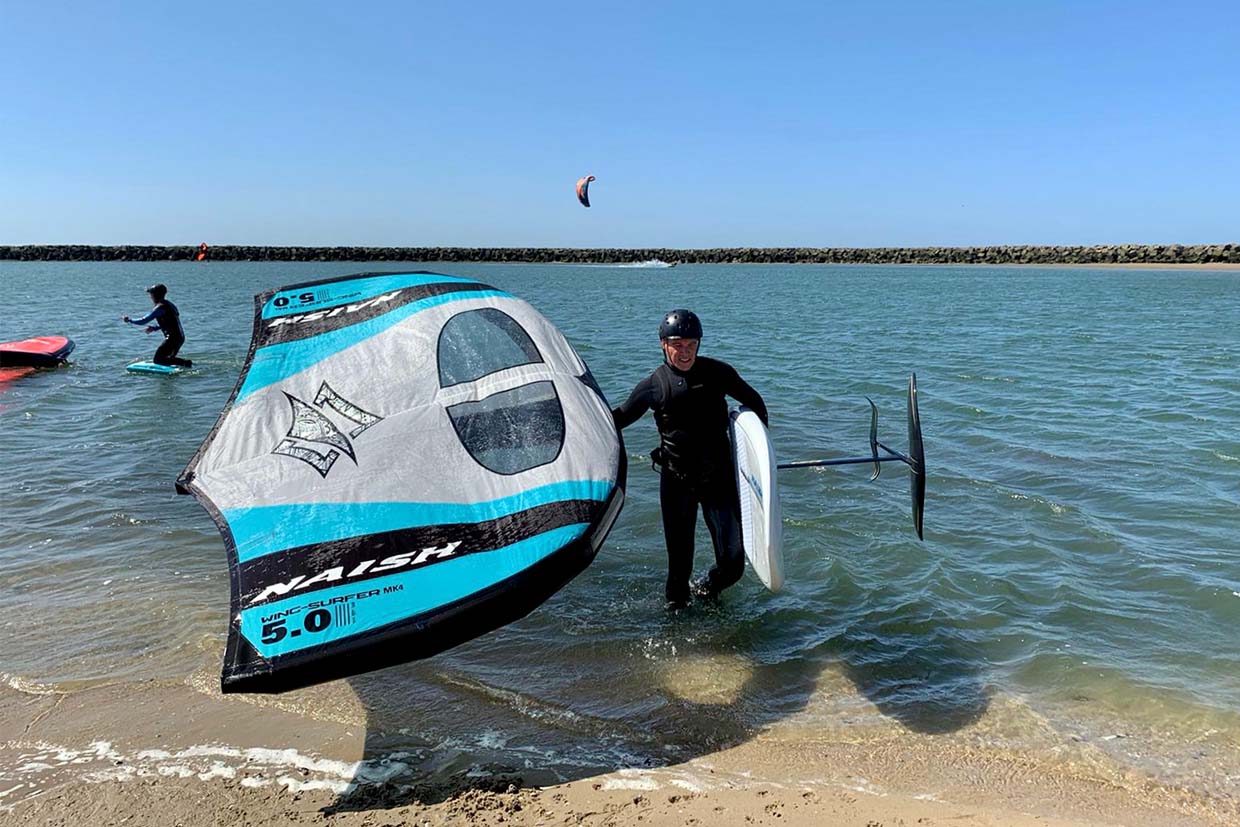An article in the Financial Daily with the title “PFAS on the coast: Knokke would rather bury its head in the sand.” The article starts with the warning that the Flemish coast contains so much sea foam that children are no longer allowed to play in it. Also that there are PFAS in the 'healthy' sea air and that there are even more PFAS on the beach and at sea than in the city. It is not the first time that we, as fans of the beach, the kitesurfer en wingfoiling hear about PFAS. Reason enough to explore how much we should worry and what you can do about it. We also link to a PFAS map of the Netherlands for you so that you can check for yourself how things are going.
PFAS are chemicals
PFAS is a collective name and stands for per- and polyfluoroalkyl substances. There is also PFOS, PFOA and GenX. These chemicals are man-made and can have a negative effect on the environment and health.
What does PFAS contain?
For example, PFAS is found in lubricants, food packaging materials, firefighting foam, non-stick coatings of pans, clothing, textiles and cosmetics. They are also used in various industrial applications and processes.
Harmful properties of PFAS
More and more is known about PFAS. For example, it is known that a number of PFAS have undesirable properties. They do not or hardly break down in the environment and accumulate in people, animals and plants. They are also poisonous, which means they can have harmful effects on people and the environment. In addition, they spread easily and quickly.
The health-based limit value for PFAS is 0,6 nanograms per kilo of body weight. In children who frequently play in the sea, this value was exceeded three out of five measurements, increasing with an exposure that was a hundred times higher.
Restrict PFAS
There is currently a European project to restrict PFAS, but because the substance breaks down very slowly, they would still be present for years and it advises RIVM the government to reduce contact with these substances as much as possible.

PFAS for water sports enthusiasts and bathers
Apart from the PFAS that you already consume every day through food and water, you can do all kinds of things. But you can't avoid PFAS. After all, you have to breathe. The article mentioned indicates that the values found in Knokke can be dangerous for small children, because they are more likely to swallow foam particles and ingest relatively large amounts of PFAS, due to their low body weight. Water sports enthusiasts are also at risk because they come into contact with sea foam more often. Once at sea, the concentration is much lower.
The background may lie in the fact that PFAS likes to attach to aerosols that are created in waves, which are called sea spray. Research has confirmed this.
What can you do to avoid PFAS
As mentioned, we love water sports the kitesurfer en wingfoiling. We often do this at sea and therefore always have to go through the surf via the beach. During the period of girlup and in strong winds the surf can be a big foam party. In addition, practicing the sport requires an occasional sip of seawater with sea foam. Especially in the beginning and when you... tricks is doing.
As far as we can analyze, trying to prevent water from getting into the surf is what you can do about it. If you want to prevent PFAS even more, stay behind the surf once you are through it and pay extra attention during days with a lot of sea foam and sea spray. Rinsing yourself and your equipment with water can also help.
Also watch: learn to kitesurf at sea.

PFAS map Netherlands
The PFAS map Netherlands is a map for experts on the website of Rijkswaterstaat. Via the Chemistry option, after which Surface water or Suspended dust, you can also select 'PFAS-ZS' and 'PFAS-OW' from all options to view the values. The PFAS map of the Netherlands is not an easy map for us with data that is easy to interpret. By zooming in on the map you will find colors next to which you can see what this means in the legend. We hope that the map will be further adapted especially for water sports enthusiasts so that we can see and anticipate current PFAS measurements of the North Sea and coastal areas.

PFAS for boaters: to be continued
Research is currently underway in all Dutch coastal provinces to investigate the seawater and sea foam of the North Sea. The results are at the RIVM and we are waiting for the advice. We will inform you about this.






